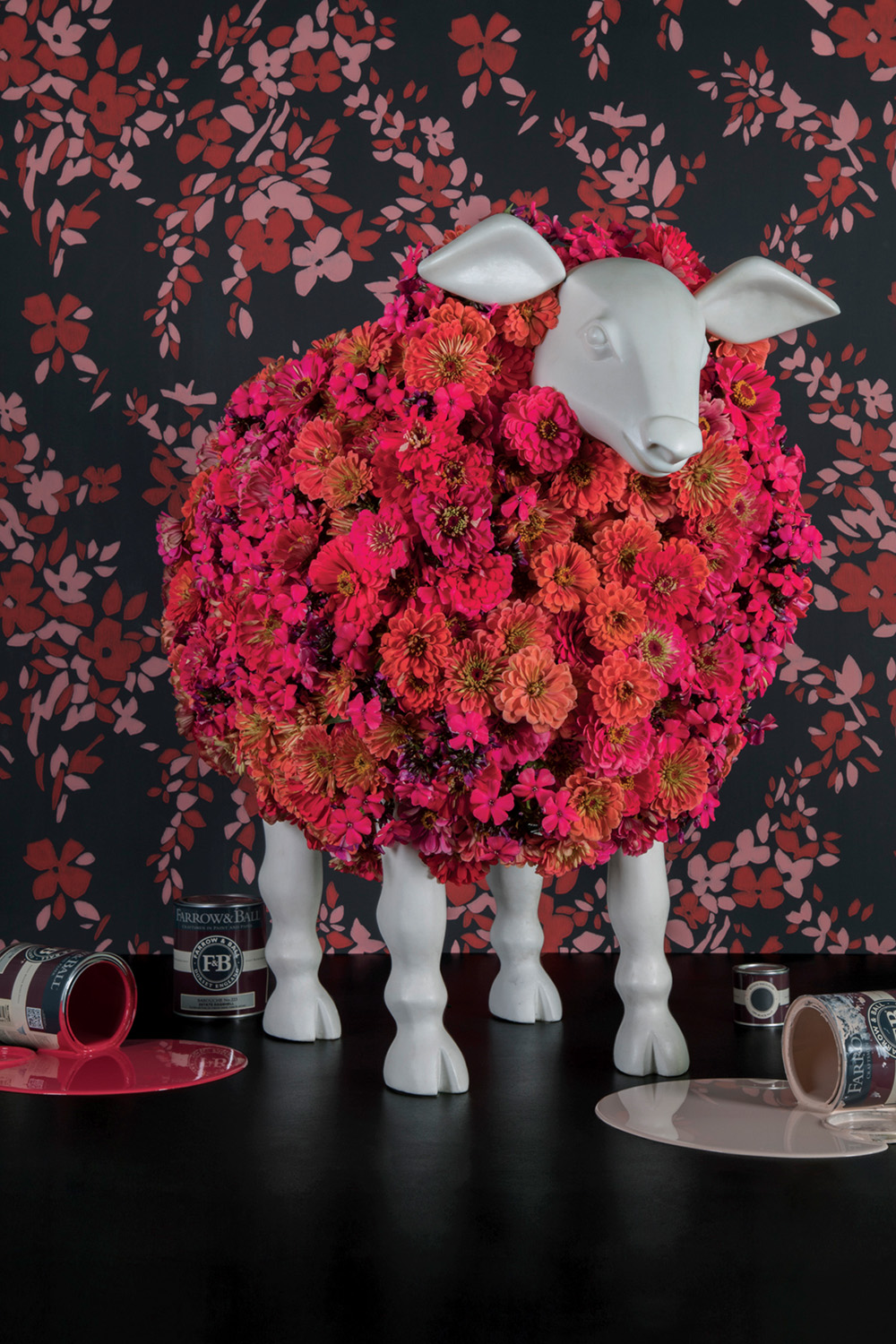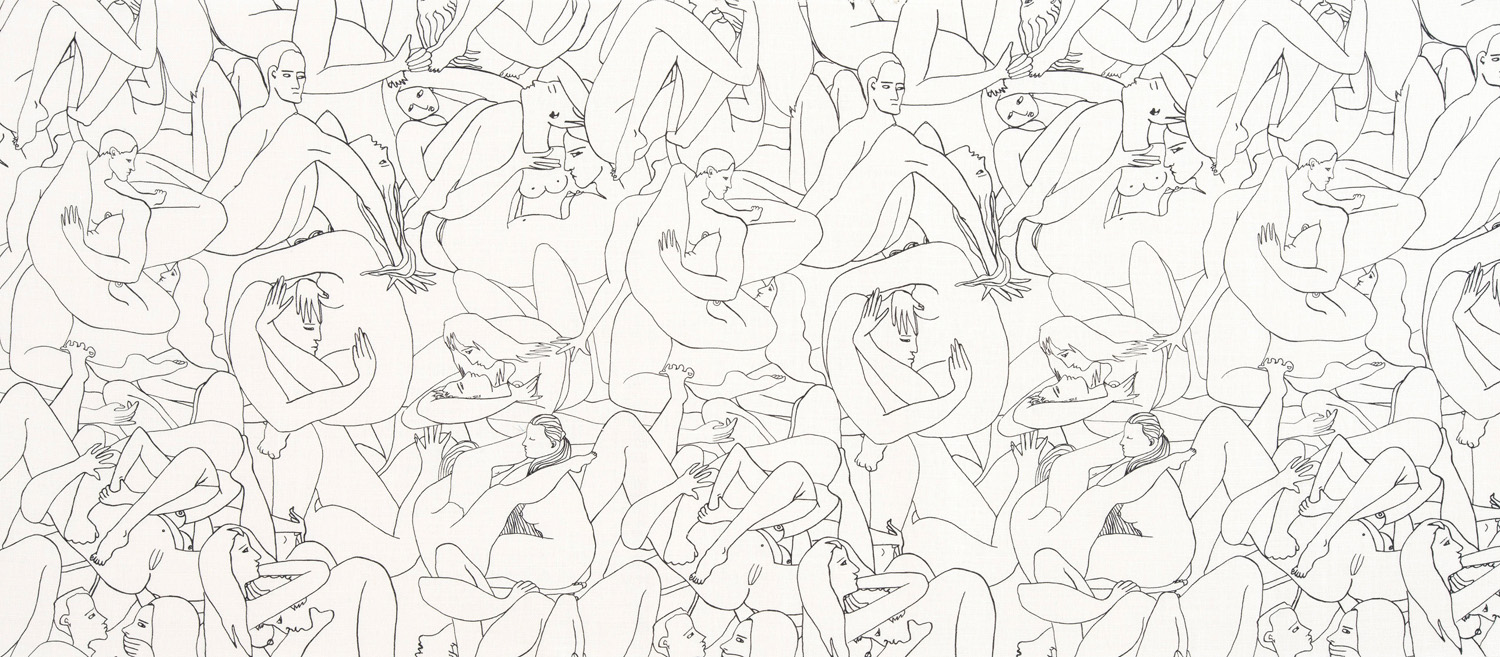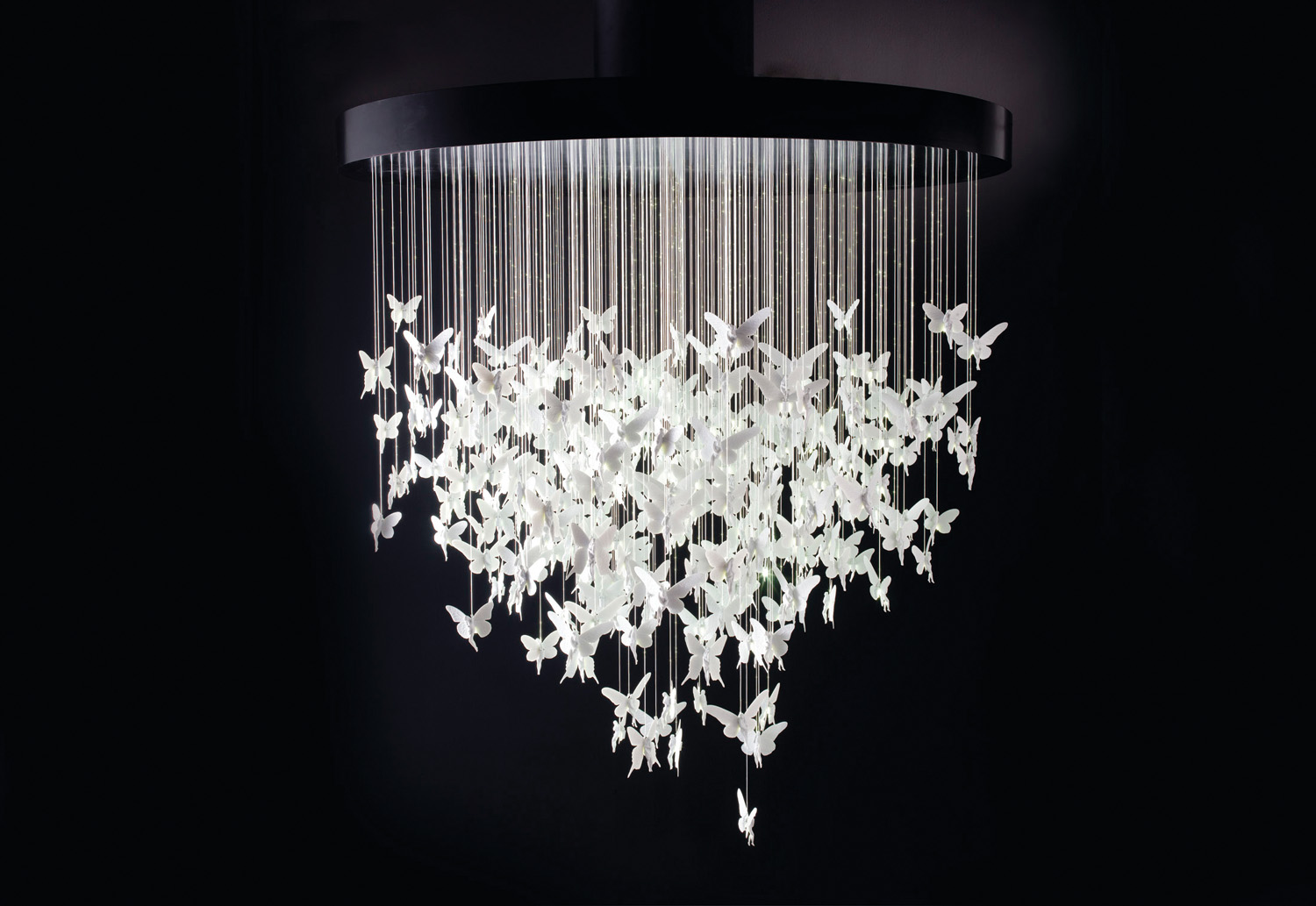In the world of design, even established brands must work tirelessly to keep their hard-won success, especially in a society that’s always looking for the next big thing. To maintain their tastemaker and innovator status, heritage brands are turning to collaborations with up-and-coming or esteemed artists to spark new ideas and to encourage consumers to view them in a new light.
Lladró knows the value of welcoming outside talent. In 2005, Spain’s 65-year-old porcelain maker launched the Re-Cyclos project, inviting designers to develop new objects inspired by Lladró’s classical pieces. In response, renowned design studio CuldeSac in Valencia re-envisioned Lladro’s traditional Christmas balls and bells as crowns and geodes. The following year, Lladró enlisted Londonbased German ceramist Bodo Sperlein to come up with a collection of pieces inspired by nature. Out of this partnership grew vases, a jewellery collection and the Niagara, an elegant chandelier comprised of a cloud of suspended porcelain butterflies.
Since then, the Spanish company has worked with more than five outside designers, according to Cristina Egido, head of marketing and communications at Lladró USA. “The collaboration with external designers has been a way to bring a fresh look, mixing external innovative and creative minds with the deep know-how of the company,” she explains.

For a collaboration to be successful, both parties must have compatible visions, notes Charlotte Cosby, head of creative for 72-yearold paint and wallpaper manufacturer Farrow & Ball. “We collaborate with brands that have the same values that [we stand] for — design, prestige, craftsmanship, color and quality.”
Last fall, Dorset, England–based Farrow & Ball teamed up with premier florist Lewis Miller Design in New York City, whose client roster includes MoMA, Chanel and Vogue. To coincide with New York Fashion Week Spring/Summer 2018, the partnering brands launched an eye-catching series of floral installations at intersections and construction sites in Manhattan. “The goal was to build on the energy of a city like New York, especially during Fashion Week, and inspire people to find a moment of escapism in the everyday, ” says Cosby. “[We] were able to bring an unexpected sense of beauty and escapism to ordinary street corners.” The “flower flash” sites displayed prints from the new Farrow & Ball wallpaper collection, a maximalist celebration of texture and natural forms.
While every collaboration offers an element of risk, this one was a coup de foudre (“thunderbolt,” in idiomatic French), according to Crosby. “We approached [Lewis Miller] and found that there was mutual admiration. Together we created something truly spectacular and whimsical that celebrated the best of both of our brands.”

There are also times when like minds can come together in the most unlikely of places. Pierre Frey SA, a French fabric company founded in 1935, partnered with Bronx-born graffiti artist Torrick Ablack, a.k.a. Toxic, in 2014 to produce a collection of wallpaper and fabric. “When I came back from living in New York, I told my father we had to do some street art,” recalls Pierre Frey, co-owner of the firm bearing his grandfather’s name and the family’s namesake grandson. He took his father, Patrick, to see some street art exhibitions for inspiration.
This merging of talents proved to be a savvy decision, says Frey. “It was really fresh and vibrant. There was a decorative aspect to it and I could see it right away as curtains or on a sofa. Boom! This is who I need.” The wallpaper has done especially well. “One Paris hotel used it in all six floors of its stairwell,” he notes.
Collaborating with outsiders is nothing new for them, Frey adds. “It’s what we’ve always done since the house was created. We try to find artists that are bold and strong.” The company even produced an erotic print created by French artist Louise Bourgoin in 2014. “It did really well, and still does,” he reports.

Closer to home, there are Canadian brands looking to make matches made in design heaven. Even young brands are on the hunt for great ideas and fresh ways to capture attention.
For Montreal-based CDI Furniture, this means moving into decorative accessories and lighting. “We’re finding the right collaborators, whether they come from the world of interior design, art or fashion, to inject their artistic vision into our brand,” says Jonathan Malka, CDI’s director of product development and marketing. One such new partner is L.A. fashion designer David Levy, who, notes Malka, has “never put a nail to wood” but whose work will add “a kind of Malibu, bohemian chic” to CDI’s offerings. Expect puffed, upholstered sofas and dining and occassional pieces — mostly sized to fit condos — to to be launched later this year.
Another collaborator on CDI’s roster is Hudson Bay retail veteran Arren Williams, who, along with his husband, David Pimentel, owns the décor company Casa Cubista. Williams describes his project with CDI — Arcade by Arren Williams — as “a little Art Deco, a little ’70s rock and roll, and a lot of glam.” Tentatively set to launch this spring or summer, the collection will feature a palette of leather, brass, marble and tropical wood.
For any brand, investing in fresh ideas inspires creativity at its highest form. “Our job is to support the artist or collaborator to create something that makes sense in the market,” says Malka. “We look to our collaborators for different ideas, colour boards and inspiration, but it’s the contribution of both parties that makes [the partnership] interesting.”
By Caitlin Kelly – *This article originally appeared in INSIGHT: The Art of Living | Spring 2018
Photos: Anne-Emmanuelle Thion ; Lewis Miller Design ; Lladró ; CDI Furniture



